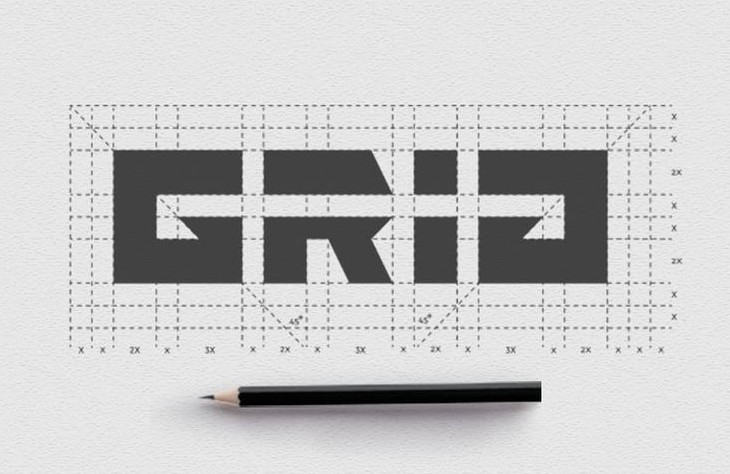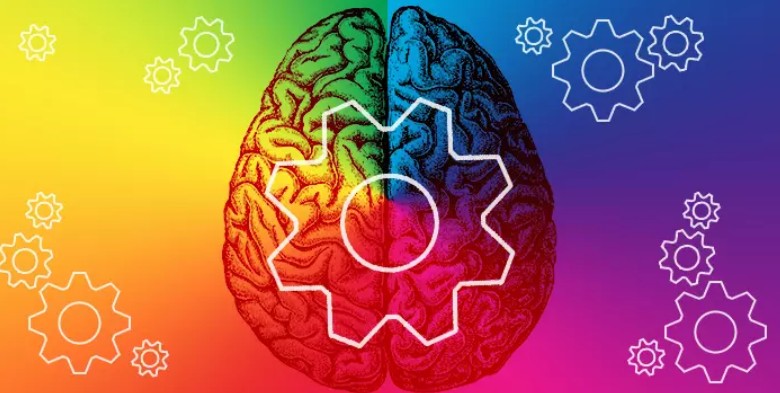Best Selling Products
Discover the Power of Grid Systems in Logo Design
Nội dung
- 1. What is Logo Grid?
- 2. The role of grid systems in logo design
- 2.1. Enhance visual harmony
- 2.2. Maintain consistency
- 2.3. Testing creative design ideas
- 2.4. Create rhythmic movement in logo design
- 3. Classification and application of grids in logo design
- 3.1. Draft grid
- 3.2. Column grid
- 3.3. Modular grid
- 3.4. Hierarchical grid
- 3.5. Radial and circular mesh
- 4. Principles of design by grid system
- 4.1. Balance and proportion
- 4.2. Easy to align and easy to read
- 4.3. Consistency and rhythm
- 4.4. Spatial relationships
A logo grid is a tool used to help create shapes with geometric harmony during the process of constructing a logo. Logo grids are often referred to as construction guides, depending on the shape of the grid (or guide) used.

If you’ve ever wondered what makes a logo both eye-catching and legible at any size, from a tiny business card to a large billboard, the answer often lies in a seemingly “silent” but incredibly powerful tool: the grid . You can think of a grid as an invisible skeleton that helps every line, distance, and proportion in your logo be arranged harmoniously and easily seen.
Logo design not only requires you to be rich in ideas and know how to be creative, but also needs a solid method to put those ideas into practice. When using a grid, you are given a “compass” to ensure that every detail has its place. Thanks to that, the logo not only looks beautiful but is also highly applicable, easy to recognize and remember. In this article, we will learn together: what is a grid, why is it important for logo design and popular grid types that you can apply. Let's explore with SaDesign how to turn the grid system into a reliable “companion” in your logo design journey!
1. What is Logo Grid?
A logo grid is a tool used to help create shapes with geometric harmony during the process of constructing a logo. Logo grids are often referred to as construction guides, depending on the shape of the grid (or guide) used.
Grids are typically made from a square grid, such as the one used for grid paper like you used in school. But the structure of a logo grid can be expanded. Some designers use circular grids, and others create a unique grid system for each project that includes “invisible” lines for height, spacing between elements, and white space.
.png)
The common element in all grid diagrams is that they use a type of mathematical method, where space and full space are supported by location along the grid during the design process.
2. The role of grid systems in logo design
A logo is a visual representation of a brand’s identity and its design requires careful and precise planning. A grid system provides a guide that designers can use to ensure that all elements of a logo are aligned properly. By using a grid, designers can create logos that are visually balanced, easy to understand and leave a lasting impression on customers.
2.1. Enhance visual harmony
One of the main benefits of using a grid system in logo design is that it enhances visual harmony. Grids help to evenly distribute the visual weight of different elements, be it typography, symbols or shapes. This balance is important for logos, as it ensures that no single element overwhelms the others, allowing for a cohesive and unified design.
2.2. Maintain consistency
Grids also play an important role in maintaining consistency across different applications of the logo. Logos often need to be resized and reproduced across different media, from small favicons to large billboards. A grid system ensures that the proportions of the logo remain consistent, regardless of scale, maintaining its legibility and impact.
.png)
2.3. Testing creative design ideas
Another significant advantage of grid systems in logo design is that they facilitate creative exploration. While grids provide structure, they also provide a playground for designers to experiment within a defined space. The paradox of freedom within these constraints often leads to creative and unique logo designs. Grids can serve as a starting point, guiding the initial stages of the design process while leaving room for creative interpretation and experimentation.
2.4. Create rhythmic movement in logo design
Grid systems help create a sense of rhythm and movement in a logo. By carefully placing elements along grid lines or intersections, designers can intentionally guide the viewer’s eye through the logo. This control over how a logo is perceived can greatly enhance its effectiveness in communicating a brand’s message.
In short, the role of grid systems in logo creation is diverse and indispensable. They provide a foundation for balance, consistency, and creative exploration, all of which are essential in creating logos that are not only visually striking but also effectively communicate a brand’s identity.
.png)
3. Classification and application of grids in logo design
3.1. Draft grid
Script grids are the simplest form of grid, consisting essentially of a rectangular area. They are widely used in logo design, especially text-based logos or wordmarks. They help align text for maximum legibility and impact. They ensure that the typography in the logo is balanced and in harmony with any accompanying imagery.
.png)
3.2. Column grid
Column grids are characterized by multiple vertical divisions, allowing for greater flexibility in layout design. In logo design, column grids are especially beneficial for logos that combine multiple elements, such as text alongside icons. They help designers organize these elements in a coherent and visually appealing way, ensuring that each element gets adequate space and attention.
.png)
3.3. Modular grid
Modular grids are more complex, involving both vertical and horizontal divisions that create a matrix of modules. These grids are ideal for logos that require a high level of detail and precision. Designers can use modular grids to meticulously arrange and size elements, allowing for complex designs while maintaining a clean and organized look. These grids are especially useful for creating icons or logos with multiple interlocking sections.
.png)
3.4. Hierarchical grid
Hierarchical grids do not follow a uniform structure, instead, they are customized to prioritize certain elements in a design. In logo design, hierarchical grids are essential when the logo needs to emphasize a specific aspect, such as the brand name or icon. This type of grid allows designers to create focal points in the logo, directing the viewer’s attention to the most important part of the design.
.png)
3.5. Radial and circular mesh
For logos that require a sense of movement or incorporate circles, radial and circular grids are invaluable. These grids revolve around a central point, providing a framework for creating logos with circular dynamics or symmetry. They are especially effective for brands that want to convey a sense of unity, infinity, or cyclical processes.
.png)
The versatility and effectiveness of using different types of grids in logo design is a testament to their versatility and effectiveness. Whether creating a simple, clear wordmark or a complex logo symbol, grids provide a structured approach that enhances both the aesthetic quality and functional purpose of a logo. By understanding and using these different types of grids, designers can create logos that are not only visually striking but also resonate strongly with their target audience.
4. Principles of design by grid system
4.1. Balance and proportion
Balance is essential in logo design, as it provides a sense of stability and professionalism. A grid system helps to evenly distribute the visual weight of the logo’s elements, whether through a symmetrical or asymmetrical design. This ensures that no part of the logo dominates or overshadows another, maintaining a balanced and aesthetically pleasing layout.
4.2. Easy to align and easy to read
The main advantage of using a grid system in logo design is the improved alignment and readability it provides. The grid acts as a guide for placing text and visual elements, ensuring that they align perfectly with each other. This precise alignment contributes to a cleaner, more organized design, which is important for the legibility and recognition of a logo, especially at smaller sizes or when viewed from a distance.
.png)
4.3. Consistency and rhythm
Grids are a tool for establishing consistency and rhythm in a logo. By repeating elements at regular intervals or aligning them along a common axis, a grid system can create a rhythm that guides the viewer’s eye through the design. This rhythmic repetition can be especially effective in branding because it creates a memorable pattern that viewers associate with the brand.
4.4. Spatial relationships
Understanding and manipulating spatial relationships between elements is another design principle where grids are invaluable. They help designers visualize and implement letter spacing (kerning), alignment of text with other elements, and overall space allocation within a logo. Proper use of space makes a logo more accessible and easier to interpret.
Grid systems are the foundation for applying key design principles to logo creation. They provide a structured approach to enhancing harmony, balance, alignment, consistency, and spatial relationships in logos. By following the principles guided by this grid system, designers can create logos that are not only visually striking but also effectively communicate brand identity.












































